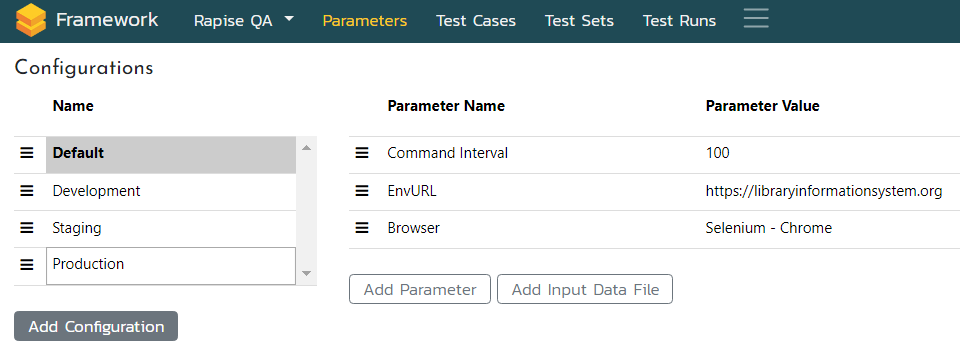
It is convenient to visualize parameters and configurations in a table format, where parameters form columns and configurations form rows. Empty cells in the table indicate that the default parameter value will be used during execution.

When executing a test set, all test cases receive all the defined parameters.
Let's explore some examples of why different configurations are beneficial.
Environment
Suppose you need to run tests on different environments. By creating a parameter for the environment URL and setting up separate configurations for each environment, you can easily override the URL value for each specific configuration.
User Account
Similarly, if you want to execute tests under different user accounts, parameters for username and password can be created, with separate configurations defined for each account.
Execution Settings
Configurations can also include parameters that modify execution settings for test cases, such as enabling or disabling screenshots, or specifying whether a test case should be stopped on error or allowed to continue.
Browser
For web tests, configurations can define the desired browser type to use, such as Chrome, Edge, Firefox, or Safari.
Mobile Device
Mobile tests can benefit from configurations that determine the device type to run tests on, allowing for seamless testing across different mobile platforms.
Language
In applications that support multiple languages, creating separate configurations for each language ensures comprehensive testing of localization and internationalization aspects.
Test Case Configuration
Additionally, configurations can accommodate test case-specific parameters, allowing for fine-grained control and customization at the individual test case level.
With the powerful parameterization and configuration capabilities of Rapise 8.0, you can easily adapt your test sets to different environments, user accounts, execution settings, browsers, devices, languages, and more.